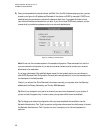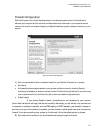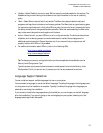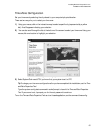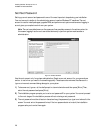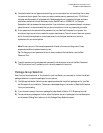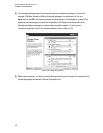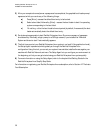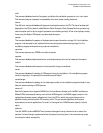Installing Red Hat* Enterprise Linux 4*
Intel® Server Board S5000PAL
53
nofb:
This command disables frame buffer support and allows the installation program to run in text mode.
This command may be necessary for accessibility with some screen reading hardware.
nomce:
This x86 boot command disables self-diagnosis checks performed on the CPU. The kernel enables self-
diagnosis on the CPU by default (called Machine Check Exception). Early Compaq Pentium systems may
need this option as they do not support processor error checking correctly. A few other laptops, notably
those using the Radeon IGP chipset, may also need this option.
nopass:
This command disables the passing of keyboard and mouse information to stage 2 of the installation
program. It can be used to test keyboard and mouse configuration screens during stage 2 of the
installation program when performing a network installation.
nopcmcia:
This command ignores any PCMCIA controllers in system.
noprobe:
This command disables hardware detection and instead prompts the user for hardware information.
noshell:
This command disables shell access on virtual console 2 during an installation.
nousb:
This command disables the loading of USB support during the installation. If the installation program
tends to hang early in the process, this command may be helpful.
nousbstorage:
This command disables the loading of the usbstorage module in the installation program’s loader. It may
help with device ordering on SCSI systems.
numa=off:
Red Hat Enterprise Linux supports NUMA (Non-Uniform Memory Access) on the AMD64 architecture.
While all CPUs can access all memory even without NUMA support, the NUMA support present in the
updated kernel causes memory allocations to favor the CPU on which they originate as much as
possible, thereby minimizing inter-CPU memory traffic. This can provide signifi cant performance
improvements in certain applications. To revert to the original non-NUMA behavior, specify this boot
option.
reboot=b:
This x86, AMD64, and Intel® EM64T boot command changes the way the kernel tries to reboot the
machine. If a kernel hang is experienced while the system is shutting down, this command may cause
the system to reboot successfully.



